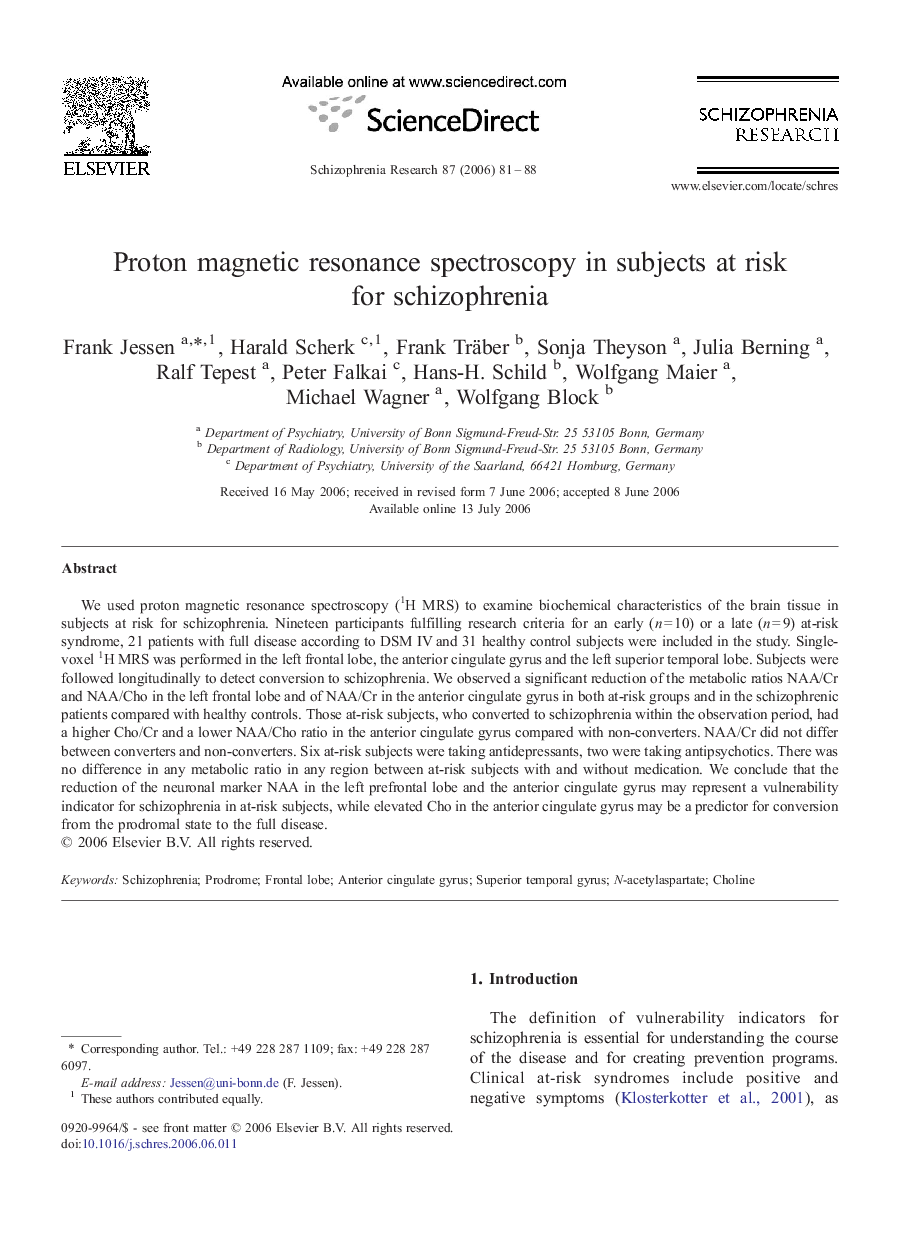| Article ID | Journal | Published Year | Pages | File Type |
|---|---|---|---|---|
| 340176 | Schizophrenia Research | 2006 | 8 Pages |
We used proton magnetic resonance spectroscopy (1H MRS) to examine biochemical characteristics of the brain tissue in subjects at risk for schizophrenia. Nineteen participants fulfilling research criteria for an early (n = 10) or a late (n = 9) at-risk syndrome, 21 patients with full disease according to DSM IV and 31 healthy control subjects were included in the study. Single-voxel 1H MRS was performed in the left frontal lobe, the anterior cingulate gyrus and the left superior temporal lobe. Subjects were followed longitudinally to detect conversion to schizophrenia. We observed a significant reduction of the metabolic ratios NAA/Cr and NAA/Cho in the left frontal lobe and of NAA/Cr in the anterior cingulate gyrus in both at-risk groups and in the schizophrenic patients compared with healthy controls. Those at-risk subjects, who converted to schizophrenia within the observation period, had a higher Cho/Cr and a lower NAA/Cho ratio in the anterior cingulate gyrus compared with non-converters. NAA/Cr did not differ between converters and non-converters. Six at-risk subjects were taking antidepressants, two were taking antipsychotics. There was no difference in any metabolic ratio in any region between at-risk subjects with and without medication. We conclude that the reduction of the neuronal marker NAA in the left prefrontal lobe and the anterior cingulate gyrus may represent a vulnerability indicator for schizophrenia in at-risk subjects, while elevated Cho in the anterior cingulate gyrus may be a predictor for conversion from the prodromal state to the full disease.
